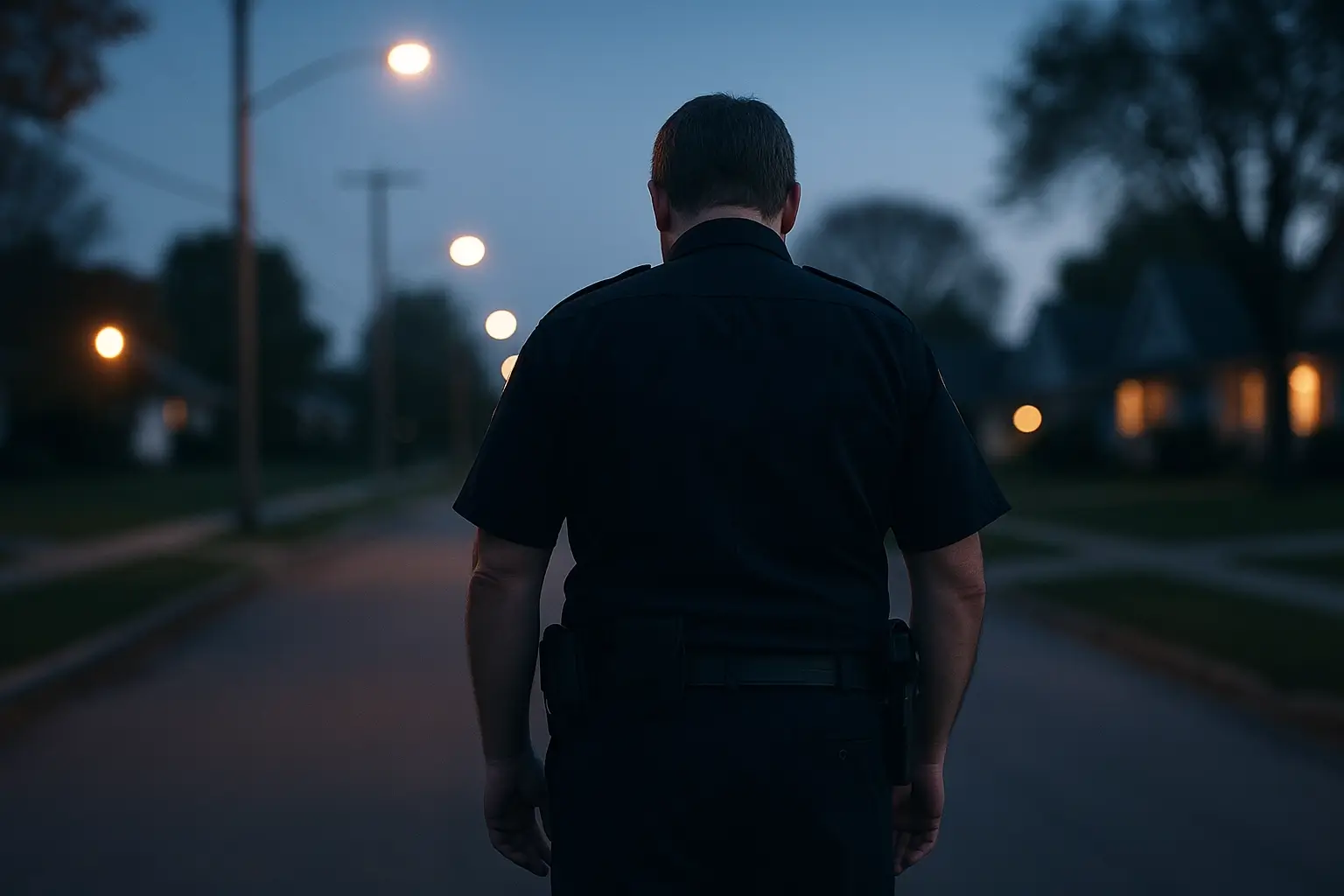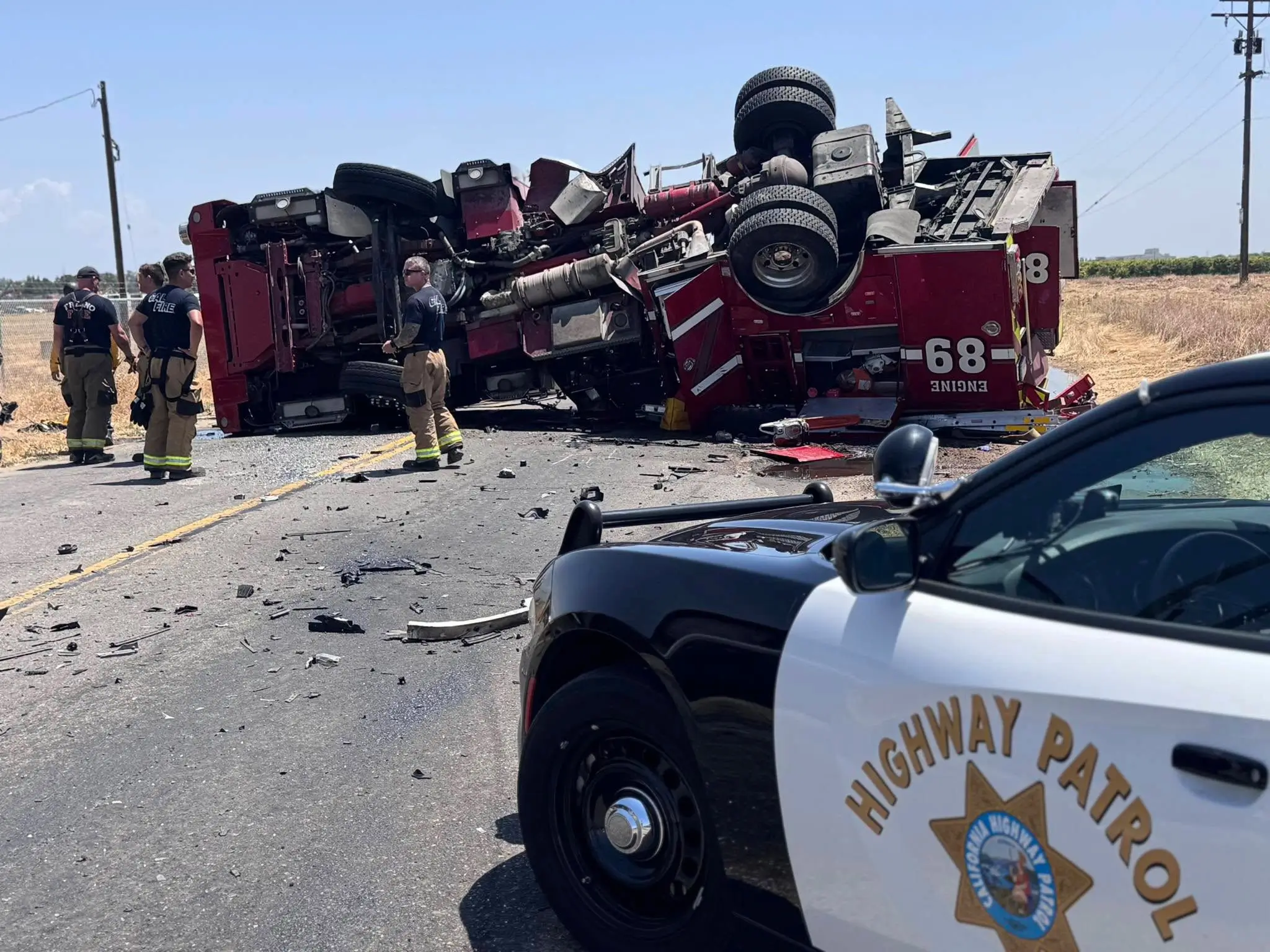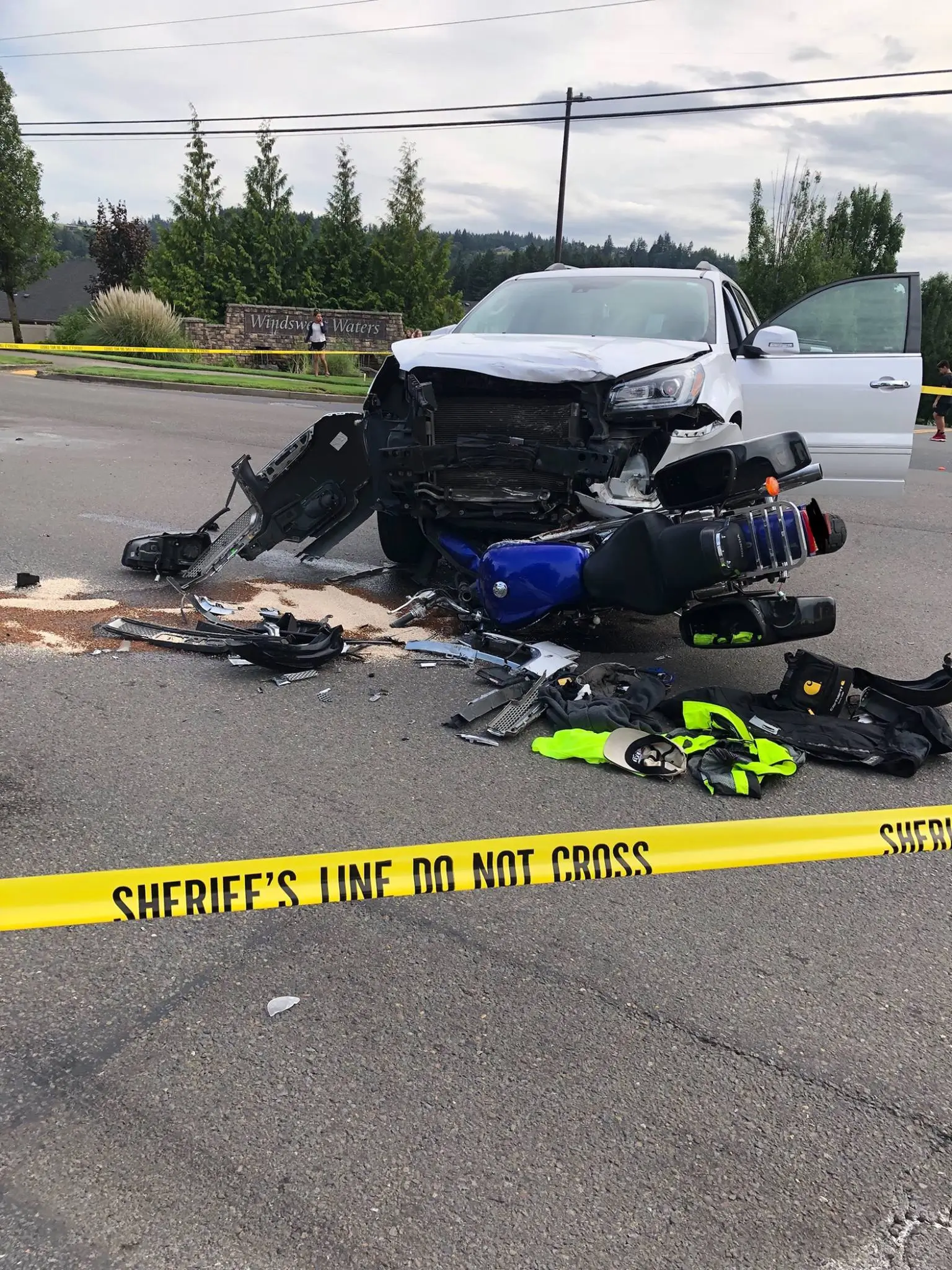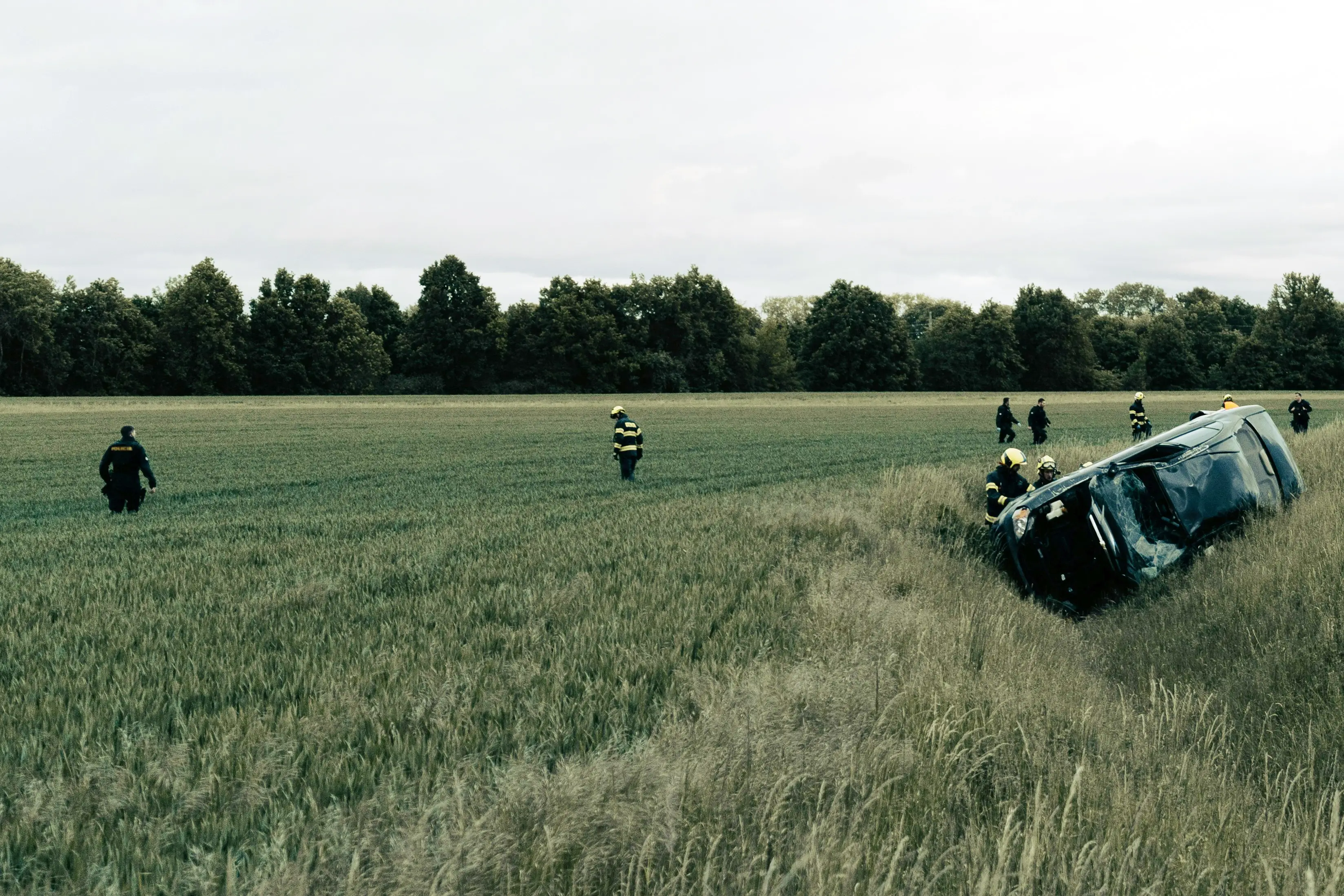The Memory That Never Fades: How Critical Incidents Reshape an Officer's Brain
By Parth B. · ~22 min read

Police officers face the worst moments of human crisis as a routine part of their job. Unlike the average person – who may experience only a few traumatic events in a lifetime – the typical police officer is exposed to hundreds of critical incidents over a career. As one law enforcement bulletin notes, "Officers see the worst of humanity every day; no one calls the police when things are going well". From violent assaults to fatal accidents, these experiences accumulate and leave lasting imprints. Many officers find that certain calls or incidents will never fade from memory, etched into their minds with a vividness and emotional weight that persists for years. This article explores how such critical incidents trigger intense stress responses, alter perception and memory, and can literally reshape an officer's brain over time, impacting their mental health, behavior, and relationships. By understanding what our officers endure – and how it affects them – the public and police agencies can better support those who serve and protect us. [Source]
What Are Critical Incidents in Policing?
In law enforcement, a "critical incident" is any high-stress, traumatic event that has the potential to overwhelm an officer's normal coping abilities. Such incidents take many forms, from sudden life-and-death encounters to prolonged exposure to human tragedy. Examples include:
• Officer-involved shootings or near-death experiences: Confrontations where an officer or others are in immediate peril (e.g. firefights, ambushes). These events can be shattering – one study found that two-thirds of officers involved in shootings develop moderate to severe psychological problems, and about 70% leave the force within seven years of the incident. [Source]
• Line-of-duty deaths or serious injuries: Losing a fellow officer or seeing a partner gravely injured on the job. This not only brings grief but also a stark reminder of personal vulnerability.
• Horrific crime scenes and accidents: Working scenes of gruesome homicides, fatal crashes, or cases involving children (such as child abuse or deaths) can be deeply upsetting. These images can haunt officers, replaying in their minds long after the scene is cleared.
• Mass casualty or disaster events: Large-scale incidents like terrorist attacks, mass shootings, or natural disasters where devastation is widespread. The sheer magnitude and shock of such scenes can overwhelm even seasoned officers.
• Personal threat and violence: Being assaulted, trapped in riots, or facing a suspect with a weapon. The fight-or-flight surge in such moments is intense, as officers must make split-second life-or-death decisions under extreme duress.
• Cumulative "daily" trauma: Not every trauma is a singular dramatic event. Officers also endure the steady drumbeat of human suffering: responding to suicides, comforting abused victims, witnessing senseless deaths, and dealing with violence day after day. Over time, this cumulative trauma can be just as damaging as any single incident. In fact, many officers who suffer PTSD or burnout were "just doing what is asked of them every day", not necessarily involved in one headline-making event. [Source]
Critical incidents are an occupational hazard of policing. Studies show an officer will experience an average of 178 critical incidents in the line of duty, compared to perhaps two or three traumatic events for a civilian in the same span. Each of these incidents tests the officer's resilience. While training and "toughness" help officers perform in the moment, the aftermath of trauma often hits later – sometimes accumulating until "the bucket overflows." As we'll see, these experiences can leave psychological scars and even alter the brain's functioning, explaining why an officer may never truly be the same after a critical incident. [Source]

An officer walks alone as another shift ends, carrying the invisible burden of the day's calls. The solitude of the walk home offers no escape from the memories - the accidents witnessed, the families comforted, the lives that couldn't be saved.
Fight or Flight: The Brain's Response to Extreme Stress
When a critical incident erupts – a gunfight, a near miss on the highway, an armed suspect charging – an officer's brain and body kick into survival mode. This is often called the "fight or flight" response, governed by our most primitive brain regions and hormones. In a split second, a flood of stress chemicals like adrenaline and cortisol surge through the body. Heart rate and blood pressure spike, senses sharpen, and pain sensitivity drops – all aimed at maximizing chances of survival in the face of mortal danger. This acute stress response is essential for police officers confronting life-threatening situations, enabling rapid reflexes and heightened alertness. [Source]
However, the biological storm that helps an officer survive a crisis also has side effects on the brain's processing of memory and perception. Under high stress, the brain shifts from a rational, analytical mode to an instinctive, experiential mode. In practical terms, this means an officer's attention and memory focus intensely on the most threatening elements of the situation (such as a suspect's weapon), while filtering out other details. This phenomenon is sometimes called "perceptual narrowing" – for instance, officers commonly report tunnel vision, where their field of vision collapses to the threat, and auditory exclusion, where they don't hear gunshots or other sounds during the incident. Indeed, surveys of officers involved in shootings have found that: over 50% experienced tunnel vision; around 84% did not hear some or all sounds (auditory lockout); a majority experienced time distortion (most often feeling events "slow down," while some felt time speed up); and many acted on "autopilot" with little conscious thought, as training took over. [Source]
These stress-driven distortions are normal biological reactions to danger. The brain's fear center (the amygdala) and survival reflexes take charge, while portions of the prefrontal cortex (responsible for logical thinking and detailed memory encoding) are partially suppressed. The result is that memory formation during a critical incident can be fragmented. Psychologists refer to this as critical incident amnesia – immediately after a high-stress event, officers may struggle to recall key details or sequences of what happened. Often, only after a rest period (such as a sleep cycle) do memories become more accessible, as the brain has time to consolidate them. Even then, the recollection may be incomplete and "reconstructed" from both genuine memory and post-incident information (like what other witnesses or media reported). In short, while some moments of a critical incident are seared into an officer's mind forever, other parts vanish or blur – an inherent contradiction of trauma memory. Investigators recognize this, which is why many agencies allow 48–72 hours before taking a formal statement from an involved officer, so that memory recovery can occur and acute shock can subside. [Source]
Perception and Memory Distortions in Critical Incidents
Officers who have been through deadly force encounters often describe their memories in strikingly similar ways. They recall crystal-clear images of certain things – like the muzzle flash of the suspect's gun, or a colleague's face – yet also report gaps and confusion about other aspects, such as how many shots they fired or the exact timeline of events. Research by law enforcement psychologists confirms that suchmemory distortions are common during traumatic incidents. In one 6-year survey of officers in shootings (by Dr. Alexis Artwohl), more than 70% of officers said their vision was sharper than normal (heightened clarity) for central details, whereas peripheral details were missed. Similarly, over 80% had some form of auditory distortion (most commonly, they couldn't hear some sounds at all), and about 60% felt time "slow down" during the high-stress moment. On the other hand, 46% of officers reported memory loss for parts of the experience, and around 40% reported a sense of dissociation – feeling detached, as if watching events unfold from outside their body.
These findings underscore that memory is not like a video camera; it is a fluid, biological process heavily influenced by stress. Under extreme arousal, the brain's priority is keeping you alive, not recording a play-by-play narrative. The stress hormones and sympathetic nervous system activation cause perceptual narrowing, meaning the brain fixates on what it deems most critical (e.g., the source of threat) and oftenblocks out other sensory input. This is why an officer might vividly remember the firearm pointed at them but have no memory of a bystander screaming nearby or of pain from their own injury in the moment.

Even those who rush to save others are not immune to tragedy. This overturned fire engine represents the risks all first responders face daily - a sobering reminder that every emergency call could be their last.
Photo credit: California Highway Patrol - Fresno | Source: Facebook
Another consequence of high stress is that memory encoding in the hippocampus (the brain's memory center) can be disrupted, leading to fragmentary recall. Immediately after an incident, an officer's recollection might be disorganized or full of holes (the "post-incident amnesia" phase). Often, within a day or two, more memories resurface as the hippocampus consolidates the experience (the "memory recovery" phase). Yet, even these recovered memories can be unconsciously altered or supplementedby things the officer learns later (e.g., seeing news footage, talking to fellow witnesses). It's important to note that these memory distortions are involuntary – they are the brain's way of handling an overload. As experts caution, when an officer's account doesn't match every detail of forensic evidence, it may not indicate lying or cover-up, but rather the genuine tricks trauma can play on memory. Recognizing this, many police departments have adapted interview protocols after shootings to account for critical incident memory effects.
Despite these distortions, certain emotional memories from critical incidents often remain extraordinarily powerful and persistent. An officer might never forget the face of a child victim in a tragedy, or the exact feeling of a life-threatening moment, even if other details fade. These lingering images and sensations can intrude into the officer's mind unbidden – a hallmark of post-traumatic stress. In the next section, we discuss how such traumatic memories can "never fade" in a pathological way, manifesting as flashbacks, nightmares, or psychological triggers that indicate deeper injury.
Lasting Trauma: When Memories "Never Fade"
For many officers, the true impact of a critical incident begins after the immediate crisis is over. In the days and weeks following a traumatic event, some officers find themselves re-living the experience in their minds – vividly and often involuntarily. They might have nightmares that replay the event, or sudden flashbacks triggered by a sound, smell, or sight that reminds them of the incident. These are known as intrusive memories or intrusion symptoms, and they are one of the core features of post-traumatic stress disorder (PTSD). The phrase "the memory that never fades" tragically captures this experience: the officer cannot simply forget or move on, because the traumatic memory resurfaces again and again, almost as if stuck on loop in the brain's circuitry. [Source]
Beyond flashbacks and nightmares, officers suffering psychological trauma often experience intense emotional and physiological reactions when reminded of the incident. For example, hearing a car backfire might make a veteran officer's heart race and palms sweat as if they were back in that alley shootout years ago. This happens because the traumatic memory is not just a story archived in the brain – it's encoded with extreme fear and stress. The amygdala (the brain's fear center) becomes sensitized and can fire off alarm signals even in safe environments, interpreting benign stimuli as threats due to their association with the past trauma. In essence, the officer's brain has been "rewired" to be on high alert, a state known as hyperarousal or hypervigilance. They may feel constantly on edge, easily startled, and unable to fully relax, as their nervous system is stuck in a semi-permanent fight-or-flight readiness.
At the same time, other parts of the brain go in the opposite direction. The chronic stress and psychological injury can lead to numbing and avoidance symptoms. Officers might feel emotionally deadened or detached – as one officer put it, "It doesn't come natural to me to be nice…to anyone else" after years on the job. This numbing is the brain's defense: by blunting emotions, it tries to protect against pain. The officer may avoid people or places that remind them of trauma, withdraw from social connection, or lose interest in activities they used to enjoy. Loved ones often notice these personality changes. Officers themselves recognize that "they are not the same person they were when they got hired" – their outlook on life, emotional range, and behavior have shifted markedly due to the accumulation of traumatic stress.

A fatal motorcycle crash on Highway 224 - another life lost, another scene that will haunt the responding officers. Behind the yellow tape are first responders who must deliver the worst news imaginable to waiting families, carrying that grief forward with their own.
Photo credit: Clackamas County Sheriff's Office | Source: CCSO News Release
Clinically, when an officer has significant intrusive memories, avoidance/numbing, negative changes in mood or thinking, and hyperarousal after a trauma, they may be diagnosed with PTSD. Research indicates police officers are two to four times more likely to develop PTSD than the general population. Estimates vary, but roughly 15–20% of officers will experience PTSD symptoms during their career. Even those without full PTSD can have partial post-traumatic stress injuries that affect their well-being and performance.
It is crucial to understand that these are injuries, not weaknesses. Just as an officer might sustain a physical wound in a gunfight, they can sustain an invisible wound to the mind. In fact, trauma literally alters the brain's structure and function. Studies of PTSD victims (including combat veterans and first responders) have found measurable changes: for example, the hippocampus (involved in memory) often shrinks or becomes less active, which may relate to memory problems; the amygdala becomes overactive, which correlates with heightened fear and startle responses; and the prefrontal cortex (which helps regulate emotion and impulses) may become less efficient. These biological changes help explain why an officer cannot simply "get over" a horrific incident by willpower alone – the trauma has physically imprinted on their brain. Without treatment or intervention, the memory never fades in the sense that the body and brain keep reacting to it, as if the danger might return at any moment. [Source]
The Cumulative Toll: How Repeated Trauma Reshapes an Officer
While a single critical incident can be life-altering, for many officers it's the cumulative effect of years of stress and trauma that truly reshapes their brain and behavior. Policing is often compared to "death by a thousand cuts" – each day's distress adds a small wound to the psyche. Officers might handle a child abuse case one day, a fatal accident the next, then a violent domestic assault, all while under chronic threat of personal harm. Trauma is cumulative. If not processed and healed, each experience builds on the last, eventually overloading the mind's ability to cope.
Over years, this repeated exposure can fundamentally change how an officer's brain operates on a day-to-day basis. One effect commonly reported is a persistent state of hypervigilance – even off-duty, the officer's mind remains in scan mode, looking for threats. Lieutenants and trainers speak of a "cortisol addiction" in law enforcement. This doesn't mean officers enjoy stress, but their brains and bodies become so accustomed to the adrenaline and cortisol that calm feels abnormal. Officers may feel edgy or restless in quiet environments, and some even seek out high-stimulation activities on their off time (extreme sports, high-speed hobbies, or extra shifts in high-crime areas) because they subconsciously crave the state of alertness to which they've become conditioned. The neurological adaptation to chronic stress means the baseline of arousal is permanently raised: the "on switch" in the brain gets stuck partway on. This hypervigilance keeps them prepared for danger but at a significant cost – it often wrecks sleep, concentration, and health. It's not uncommon for veteran officers to struggle with insomnia and exhaustion; their sleep may be light and easily disturbed, as their brain refuses to fully power down from alert mode.
Another cumulative effect is the emotional desensitization or numbness we touched on earlier. After seeing so much cruelty and suffering, an officer's emotional responsiveness can flatten. This is sometimes referred to as compassion fatigue or emotional armor. Officers might come across as cynical, aloof, or uncaring – described by loved ones as "hardened" or "cold." In reality, many are protecting themselves from feeling pain. As one experienced officer-trainer observed, the "constant exposure to violence, suffering, danger and victimization" inevitably leaves its mark, and "no officer is invincible" to these assaults on the spirit. Over the years, officers commonly report becoming jaded and bitter, losing trust in others, and viewing the world through an "us versus them" lens. This shift is partly psychological, but also linked to changes in brain regions that govern empathy and social bonding (chronic trauma can dampen the brain's reward circuits and empathetic responses).
The toll extends to cognitive functions as well. Chronic high cortisol and stress can impair areas of the brain responsible for memory, attention, and executive function. Police officers with long-term PTSD or high trauma exposure have been found to perform worse on tests of verbal memory and decision-making compared to non-traumatized officers. They may have trouble concentrating or making decisions under pressure – which is doubly concerning given their job demands split-second judgment. Additionally, long-term hyperarousal can lead to irritability and impulsivity; the officer's fuse shortens, and they might overreact to minor provocations. It's easy to see how this could increase the risk of negative encounters (a stressed, hyper-reactive officer is more prone to use excessive force or make an unsound decision). In fact, some research suggests unresolved trauma in officers correlates with higher rates of officer misconduct or use-of-force incidents, highlighting that officer wellness is directly tied to public safety outcomes.
Physically, the chronic activation of stress responses ages the body faster. Elevated cortisol over months and years contributes to high blood pressure, heart disease, immune system problems, and metabolic disorders. It's no coincidence that police officers on average have higher rates of cardiovascular disease and other stress-related illnesses than the general population. Alarmingly, suicide has become a leading cause of death among police – with roughly twice as many officers dying by suicide each year as are killed in the line of duty. Experts attribute this in part to unaddressed cumulative trauma and the stigma that discourages seeking help. An officer may survive shootouts and car chases, only to lose an internal battle with psychological injuries. As one article starkly put it, "work traumas can kill them", and if agencies do not foster a culture of support, officers may feel isolated and hopeless. [Source]

Yellow tape marks another scene of loss. For the public, it's a barrier to keep out; for officers, it's a boundary they must cross repeatedly throughout their careers, each time adding to the accumulated trauma that no amount of training can fully prepare them for.
Healing the Injured Brain: Support and Resilience
Despite the daunting picture of trauma's impact, there is good news: with proper support and treatment, the injured mind can heal, and officers can regain much of their well-being. The brain is an organ capable of recovery – it can form new connections and gradually reset stress systems toward normalcy, especially if interventions are timely. Here are some of the ways law enforcement and mental health professionals are working to help officers after critical incidents:
• Peer Support and Debriefing: Many agencies have implemented Critical Incident Stress Management programs, where peer support officers (fellow cops trained in trauma response) and mental health professionals conduct debriefings after major incidents. In a typical critical incident stress debriefing (CISD), the involved officers meet within a few days of the event to talk through what happened, their thoughts during the incident, and their reactions since. This structured conversation helps normalize their symptoms (so they know it's not just "me going crazy") and allows emotional ventilation in a confidential setting. Though CISD is not a cure-all and must be handled sensitively, it often jump-starts the healing process by breaking the silence and stigma around officers' emotional responses. Departments also increasingly encourage one-on-one counseling with a psychologist for officers involved in shootings or other severe incidents, sometimes even making it mandatory before returning to duty – not as punishment or evaluation, but as routine mental health maintenance. [Source]
• Professional Trauma Therapies: Several evidence-based therapies can significantly reduce PTSD and trauma symptoms. One notable example is EMDR (Eye Movement Desensitization and Reprocessing), which has gained endorsement from organizations like the International Association of Chiefs of Police for treating officer trauma. EMDR involves the patient recalling traumatic memories while a therapist guides them through bilateral eye movements or other rhythmic stimulation. This process is thought to help the brain reprocess stuck memories and reduce their emotional charge. Studies of police officers undergoing EMDR have shown both symptom improvement and even brain imaging changes indicating a return toward normal brain activity patterns. Other therapies such as cognitive-behavioral therapy (especially Trauma-Focused CBT) and stress inoculation training can also help officers build coping strategies and reduce avoidance or hypervigilance. The key is that the trauma must be faced and processed rather than buried. As one police veteran advised, healing begins when an officer can say, "Something's going on inside I don't like – I might need some help". [Source]
• Wellness Programs and Resilience Training: Progressive police departments are adopting holistic wellness programs that treat mental health as equal in importance to physical safety. This includes resilience training in academies (teaching recruits about stress responses, healthy coping mechanisms, and encouraging social support), as well as ongoing wellness checks throughout officers' careers. Agencies are also tackling the toxic aspects of police culture that previously stigmatized seeking help. By framing trauma as an "injury" and emphasizing that strong officers proactively address injuries, departments aim to make it acceptable to talk about stress and to use psychological services without fear of ridicule or career harm. Some departments have even instituted mandatory annual mental health check-ins, so that seeing a psychologist becomes routine rather than an exception only for "broken" officers. Additionally, simple changes like adjusting schedules to improve sleep, providing on-site gyms or mindfulness training, and offering family support resources can bolster an officer's overall resilience. Research suggests that officers who maintain good social support, healthy exercise and sleep habits, and a sense of purpose are more protected against the effects of trauma.
• Leadership and Policy: Police leadership has a critical role in reshaping the narrative around trauma. Leaders who openly discuss stress, share their own struggles, and prioritize officer wellness send a powerful message that seeking help is a sign of wisdom, not weakness. Policies such as temporary relief from duty after a critical incident (with pay and support services in place), no-penalty counseling, and peer mentoring can create an environment where officers feel safe to heal. In the long term, this pro-wellness, pro-active stance not only saves careers and lives but also leads to better policing. An officer who has processed their trauma is more likely to engage with the community empathetically and make sound decisions under pressure, whereas an untreated, burned-out officer may pose risks to themselves and others. In short, supporting the mental health of officers is both a compassionate move and a public safety imperative.

First responders walk across another accident scene, their measured steps belying the urgency and emotion of the moment. Each officer here will carry this image home - another reminder of life's fragility and the weight of being society's first line of response to tragedy.
Honoring the Cost of Service
A critical incident may last only minutes, but its memory can last a lifetime. The brain of a police officer who has faced the abyss – be it a deadly shooting, a horrific crime scene, or years of accumulated trauma – is forever changed by the experience. These changes can manifest as hypervigilance, intrusive flashbacks, emotional numbing, or shifts in personality and health. The memory never truly fades because it is etched not just in the officer's mind, but in their very biology – a testament to what they have lived through. Yet, understanding this reality should not lead to despair. As we have discussed, awareness and proper care can light a path to recovery. The same brain that is injured by trauma also has the capacity to heal, given time and support.
For the public, appreciating how critical incidents reshape an officer's brain builds empathy for those who keep us safe. It reminds us that behind the badge is a human nervous system reacting to extraordinary stress. This understanding can inspire stronger community support for officer wellness initiatives and patience when we see officers struggling. For officers and agencies, the lesson is that acknowledging and treating trauma is not a luxury – it is a necessity for the safety and effectiveness of law enforcement. The culture is slowly shifting from "suck it up" to "it's okay to get help", and that shift will save lives on both sides of the badge.
In the end, an officer may never forget a critical incident – nor should we forget what we ask of them. By providing psychological armor and healing for those memories that never fade, we uphold our duty to the guardians who daily uphold theirs. Through education, support, and proactive care, we can ensure that our protectors are not left to face their darkest memories alone, and that they can continue to serve with healthy minds and hopeful hearts.

